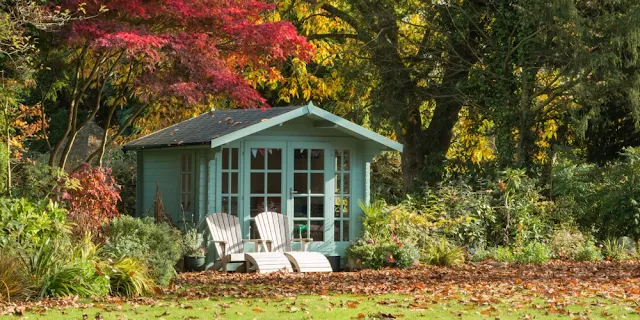Cleaning, planting, pruning... The list of missions to be carried out in the garden and vegetable garden during the autumn is long. Let's decipher all the work to be undertaken in the garden during this very important mid-season to have a beautiful corner of greenery all year round!
Autumn is a transitional season, between summer heat and winter coolness. And in the garden, there is no shortage of work! You have to clean the leaves, plant, prune, harvest, maintain, protect the soil... Here are all our tips.
HOW TO MAINTAIN YOUR GARDEN IN AUTUMN?
In autumn, a few things to do in the garden:In the ornamental garden. Collect leaves, clean beds and carry out moderate pruning on trees that need it, on summer-flowering shrubs, on hedges and topiaries.
In the vegetable garden. After you've harvested your last fall vegetables, it's time to clean out the vegetable garden. You can then sow a green manure on your empty plots of land.
In the orchard. Almonds, chestnuts, apples, pears, and walnuts are harvested... But we also take the time to clean, prune (some fruit trees only), and bring compost or manure to the foot of the trees.
WHAT TO PLANT IN THE GARDEN IN THE FALL?
Autumn is certainly the best season to plant a good number of plants! As the saying goes, 'On St. Catherine's Day, all wood takes root'. Good news, you will be able to plant your plants before and after November 25th!- Trees, shrubs and roses: in October, plant trees and shrubs in containers. Then, from November, it's time for bare-root trees and shrubs. In autumn, plant rose bushes in your garden as well.
- Small fruits and fruit trees: here again, autumn is the ideal season. Plant in containers in October and bare-root from November.
- Spring bulbs: Autumn is the time to prepare your spring flower garden! Install spring-flowering bulbs, hyacinths, daffodils, tulips, etc.
- Autumn flowers: enjoy seasonal flowers, heather and chrysanthemums, and make beautiful autumn planters.
- Vegetables in autumn: in the vegetable garden, you can plant garlic, shallots, onions, spring cabbage, autumn salads. Also think about aromatics, chives, rosemary, thyme, etc.
HOW TO PROTECT YOUR PLANTS FROM THE COLD IN THE FALL?
As some people are used to saying: 'Winter is coming.' Don't be surprised by the cold, which can appear quite early in autumn, depending on the year and the region. How to anticipate the cold in the garden in the fall?- Prepare the greenhouse: if you have a greenhouse, it is advisable to prepare it to receive your most chilly plants. Wash windows conscientiously (inside and out), especially if you have whitened them during the hot weather and take advantage of the sunny days to ventilate.
- Install protection on your vegetables: if the cold weather arrives, remember to protect your vegetables, with frames, tunnels or bells (to be ventilated, opened and lifted on days when the weather is mild).
- Protect your plants with mulch: mulching is not only useful to prevent water evaporation in summer, it is also a very good protection against the cold. It is important to mulch in the autumn before the soil is too cold! You can mulch deciduous perennials or climbers that are cold but can start from the stump at the end of winter (like jasmine for example).
- Protect your plants with a winter veil: it protects the aerial parts of Mediterranean plants and shrubs that cannot withstand temperatures that are too cold. It is not necessarily necessary to pack your plants in the fall, it all depends on the temperatures (and the hardiness of your plants). But have a winter veil available, to be drawn at the first signs of winter or in the event of a cold wave announced in your region!
- Overwintering your potted plants: which potted plants to overwinter? Plants that are not (or weakly) hardy, such as citrus fruits, cacti, hibiscus, oleanders, birds of paradise, succulents... The most fragile plants should be sheltered in the autumn before the cold arrives to avoid any thermal shock. Plants that are cold but more resistant can wait until the first cold weather arrives, but be vigilant because potted plants are more vulnerable than plants in the ground. You will therefore place your plants that need it in a frost-free room, ideally unheated, but with natural light and good ventilation. It can be a greenhouse (but keep an eye on the temperatures), a veranda or even a garage if it has windows.

